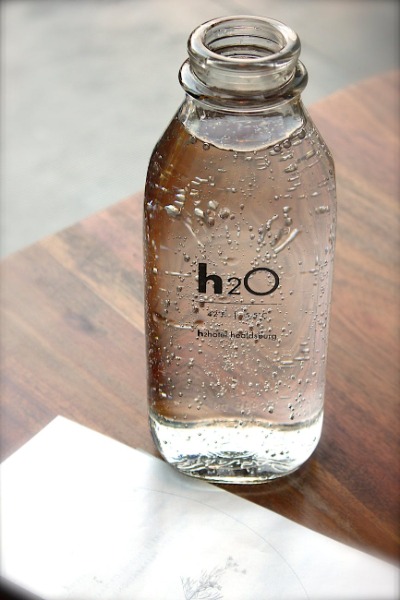It’s Hot Out. Here Are Some Tips to Stay Cool
Published Jul 14, 2018

In Boston, some women are using parasols for shade. In New York City, children frolic in the spray of opened sidewalk fire hydrants. And in Lexington, Ky., people celebrating the Fourth of July clutched battery-operated hand-held fans.
 Americans expend as much effort improvising ways to escape the heat of summer as they do reveling in its rituals at pools, picnics and beaches, and in outdoor activities.
Americans expend as much effort improvising ways to escape the heat of summer as they do reveling in its rituals at pools, picnics and beaches, and in outdoor activities.
And they should. The Centers for Disease Control and Prevention says that more than 600 people in the United States die every year from heat-related illnesses that are preventable. (In Quebec, 33 people have diedfrom a heat wave hitting eastern and central Canada, the authorities said.)
On Thursday, the heat wave that has smothered the northeastern United States and the central Mississippi Valley for the past week was easing, according to the Weather Prediction Center. But it is shifting south and west, where wildfires have roared, pushing toward California, Nevada and New Mexico with temperatures in the mid- to high 90s, forecasters said.In the Southwest, those temperatures could linger for about three to four days, Michael Schichtel, the lead forecaster at the Weather Prediction Center, said Thursday. Temperatures in coastal areas of Southern California could rise to 90 degrees and above, with desert areas in the state hitting 115 degrees or even 120 degrees, he said.
“Heat becomes especially dangerous if it lingers for a number of days in a row, especially if it does not drop at night and give your body a chance to cool,” Mr. Schichtel said in an interview. “It is very important to take the proper precautions.”
Here is a roundup of some tips for staying cool in the summer.
Stay Hydrated
Sweating is the body’s mechanism for self-cooling, but you need to drink plenty of water to give it something to work with. Recommendations vary between two to four glasses of water every hour in excessive heat. Do not wait until you are thirsty to drink.
Pay Attention To What You Eat And Drink
Diet affects how you can manage your body's response to high temperatures, a point that Gov. Andrew M. Cuomo emphasized in a recent memo to New Yorkers for the heat wave.
Eat less salty food and protein, which produce metabolic heat that causes water loss. Eat more fruits and vegetables.
Seek Out Indoor Activities, Particularly During The Hottest Part Of The Day
The sun's peak hours are generally 11 a.m. to 4 p.m. (The Times this week compiled a list of exhibitions at museums in New York to visit when summer weather turns sultry. The article’s headline begins “The Art of Staying Cool.”)
“There are times you are going to be in the sun, but if you can avoid as much direct sunlight as possible, it is better,” Mr. Schichtel said.
Wear Loose, Lightweight, Light-Colored Clothing, And Take Cool Showers Or Baths
If you can pour water on exposed skin, that is going to allow your body to cool down,” Mr. Schichtel said.
Applying cold, wet towels on the neck, wrist, groin and armpit areas can help bring down the core body temperature.
“When these parts of the body with high concentration of blood vessels near the skin come in contact with the cold, it helps transferring heat out of the body to cool down faster,” said Dr. Shubhayu Saha, a health scientist at the C.D.C.’s Division of Environmental Health Science and Practice.
Wearing a hat protects you from direct sun; sunburns affect your body’s ability to cool down and can make you dehydrated, according to the C.D.C.And fans will go only so far; air coolers are better.
Don’t Leave Children Or Pets In A Car, Which Can Swelter In The Sun
The sun's radiationheats objects that it strikes, such as a dark dashboard or seat, warming the air trapped inside a vehicle. In about two minutes a car can go from a safe temperature to an unsafe 94.3 degrees, according to General Motors and San Francisco State University, and even reach temperatures of 180 degrees to over 200 degrees.
Learn The Signs Of Heat Stroke And Heat Exhaustion.
The C.D.C. lists some of them as dizziness, a rapid pulse, nausea, headache and fainting. But symptoms can vary. Those suffering from heat stroke, which is potentially fatal, might have a rapid but strong pulse, while those with heat exhaustion might have a rapid but weak one.
Immediate remedies include moving the person to a cooler place and applying wet, cool cloths. Call 911 if there is heat stroke, vomiting or if the symptoms get worse, the C.D.C. says.
____
Mortality increases as the heat index — a combination of the air temperature and humidity that expresses how hot it feels — rises and stays above 104 degrees for two hours or more, according to the National Weather Service. So people need to adapt their behavior and take the heat seriously, the way they do in Carefree, Ariz., a town with a population of about 3,300 people north of Phoenix where temperatures can rise to 112 degrees and above.
As the community braces for the coming heat wave, most people already know that they need to consistently hydrate and to schedule outdoor activities, from yard work to golf, in the early morning and late afternoon, Mayor Les Peterson said on Thursday.
“It’s not unusual,” he said in an interview. “People become accustomed to it.”
New York Times
2 comments


You will also like

Spoon theory: What is it and how can it help people living with chronic illness?
Apr 13, 2022 • 7 comments

What is the psychological impact of chronic pain? Carenity members share their experience!
May 27, 2021 • 8 comments

 Facebook
Facebook Twitter
Twitter
